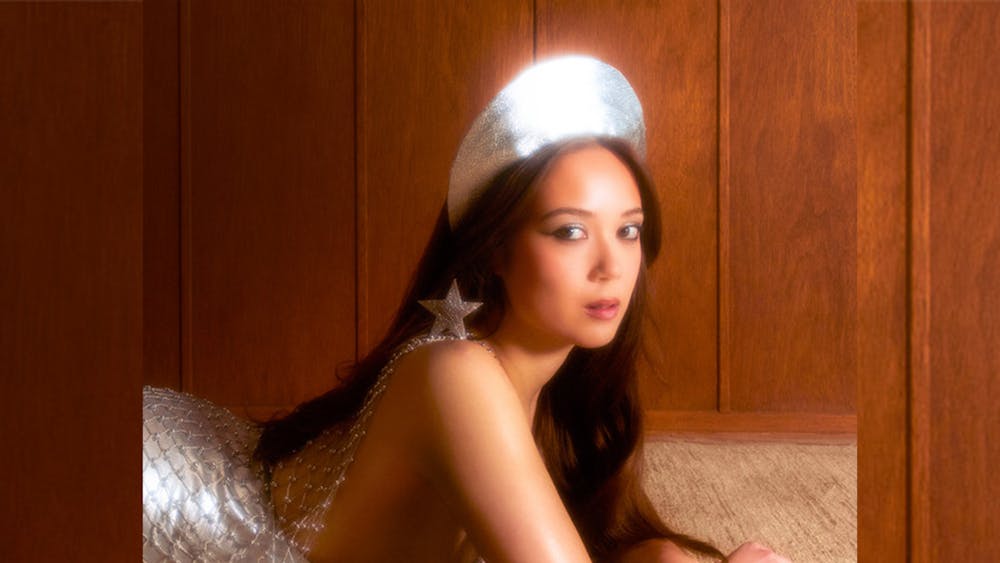Anton Chekhov's "The Cherry Orchard" opened this past weekend at IU's Ruth N. Halls Theatre. It is the last IU production directed by Professor Howard Jensen before he retires, and given how excellent the production is, he will be missed. \nJensen's production captures the realistic, symbolic and expressionistic qualities of "The Cherry Orchard" that make the play -- and probably all of Chekhov's works -- so difficult to execute, but so gratifying to witness.\nVisually, the show is a triumph by itself. Scenic designer Fred M. Duer, assistant professor of scenic design, uses suspension and balance to realize the play's blend of genres. Black curtains and drops surround a raked stage, creating the illusion of a stage floating in infinite space. A tree stage, standing stage left, provides an artistic pivot for each act. Extravagant frames and sheer white curtains capture both aristocratic splendor and the fragility of a fading way of life.\nRobert A. Shakespeare, professor of lighting design, uses lighting to meld the play's realistic and unrealistic characteristics. Shadows from the cherry trees filter downstage through imaginary windows above the audience, while upstage the lighting remains basic. Act Two begins with warm yellows that almost imperceptibly become the cool violets of a damp evening.\nAs great as the lighting and scene design are, C. Dixon Reynolds' costume designs deserve the most applause. Reynolds, a third-year Master of Fine Arts costume designer, gave the actors of his thesis production costumes that embodied a bygone life. Patterned suits, gaudy shoes, even details like hats, gloves, purses and handkerchiefs, placed the show in its own era.\nBut design can't buy applause -- the best costuming, lighting and scene design could never save poor acting.\nBut with Jensen leading the production, this wasn't a concern. Jensen's actors avoid the self-indulgent traps so many actors fall into when performing Chekhov. They find the tension between antithetical pulls that makes Chekhov so powerful. \nThe play is disturbingly lifelike, not necessarily in its moment-to-moment action, but in the totality of its moments. When there seems to be little congruence between words and action, or perhaps when a scene seems arbitrarily blocked, the play steadily reveals more of its characters, and what eluded understanding beforehand suddenly makes sense.\nTake, for instance, the end of Act Three, when Anya, played by Indiana Daily Student staff writer Kacie Leblong, a senior majoring in theater and English, tries to comfort her mother, Raneskaya, played by MFA student Vanessa Ballam Brenchley. For all their beauty, Leblong delivers her words with noticeable distraction, but it makes sense when Trofimov, played by senior theater and psychology major Dustin Bailey Henderlong, emerges behind her, making Anya's inner conflict visual and revealing her behavior as the result of complex underpinnings. \nThe play is full of such brittle and beautiful moments: Pischik, played by senior theater and English major Mike Mauloff, standing center stage with his heart breaking as everyone is packing up to leave, saying, "It's nothing;" Lopakhin, played by senior musical theater major Colin Donnell, unable to contain his resentment after he purchases the cherry orchard; Dunyasha, played by senior education major Nicole Bruce, in tears as Yasha, senior theater and journalism major Darby Cicci, hides behind a trunk; Varya, MFA student Allison Batty, pretending to look for something so Lopakhin can gather the courage to propose to her.\nIt's rare to see a show so well executed. The balance between the design and the humanity of the acting, especially at the university level, is remarkable. Jensen's previous productions gave us enough reason to miss him. The next stage he graces will be a lucky one.
A fitting farewell
Get stories like this in your inbox
Subscribe





